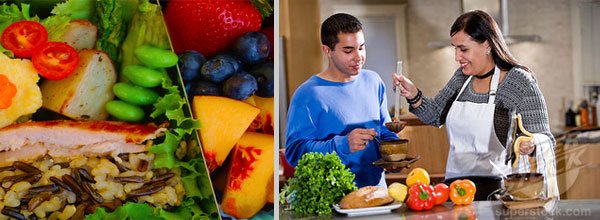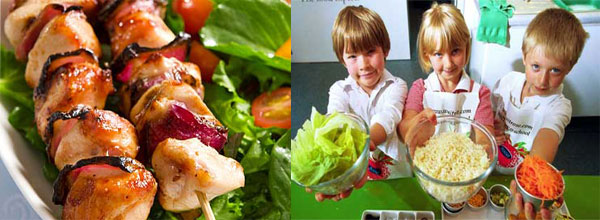Losing weight isn’t all about exercise and it certainly has nothing to do with fad diets or pills. In fact, the first step toward losing weight is taking a good look at your eating habits, which most likely are anything but healthy. By integrating even just a few healthy eating tips into your daily diet, you can start losing weight, feeling more energized and even notice an improvement in your overall mood. Better yet, healthy eating tips do not require you to spend extra money in order to get all of the great benefits of a healthy meal plan.
If you are having trouble with healthy recipes, here is a great blog by Brittany Mullins with some good stuff.
Healthy Eating Tips Start with Cooking Light
Heavy, greasy and over-fattening foods are not part of a healthy diet. Though fatty and oily foods can be eaten in moderation, most of us are guilty of expanding that moderation to the extreme. Believe it or not, junk food items will cost you more in the long run than purchasing fresh, wholesome ingredients. At first glance, frozen foods, processed ingredients and junk food items all look as though they cost less, but the reality is you eat more. Therefore, you purchase and replace more often than you would fresh, whole ingredients – and this adds up over time.
Healthy Eating Tips is Not Just Eating
Though you are what you eat, there is more to healthy eating tips than just food – what you drink counts as well. Switching to water is not only healthier, it helps you save money on your monthly grocery bill over sodas and over-sugared drinks. If you are spending the money on bottled water, keep in mind that bottled water companies get their water from municipal water just like your tap. You can save money by using a purifying filtered pitcher or attachment on your tap, which costs about $7 to $10 and gives you clean, fresh water for up to three months.
Healthy Eating Tips Starts with Protein
Protein is very important in a healthy eating diet. Eggs are a great source of protein, vitamins and are very low in price, which makes them a great breakfast item for low-budget healthy eating tips. When people hear of protein, they often instantly think of meat and with that comes the belief that you have to avoid all meats that have marbling or excess fat in them. This is, however, untrue. Fattier cuts of meat are not only more tender and easy to work with, but the fat in meat doesn’t make you fat – calories do. Furthermore, the fats in meat contain essential nutrients like Omega 3, 6 and 9 essential fatty acids.
Keeping a Food Diary
Another important part of healthy eating tips is starting out with a food diary. In order to know just how bad your eating habits are, you need to know what it is you are eating. Keeping a food diary gives you the opportunity to track what you eat, how many calories it has and how many servings you ate of it. You might be surprised how far over the “serving recommendation” you go.
Start keeping a food diary for yourself, focusing on:
- The item you eat
- What meal the item was eaten in
- Total calories, fat, nutrients, etc. in the items
- How much you ate of that item
Related Posts:
A. What Makes the Shakeology Price
B. Can You Actually Target Fat Loss?
C. What Foods Burn Belly Fat
D. Lighten Up | Tips to Start Cooking Light

